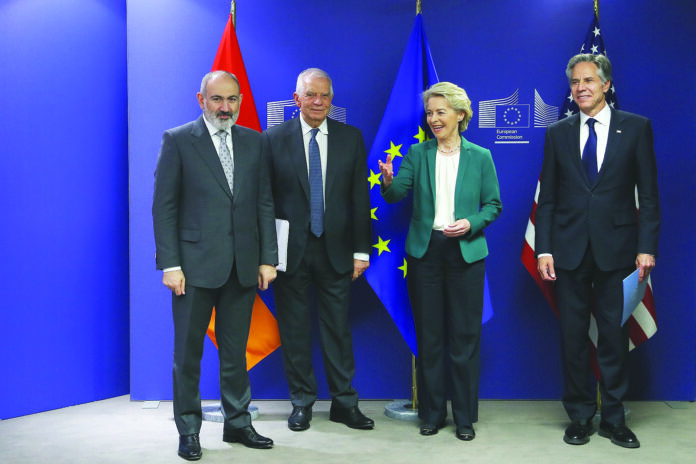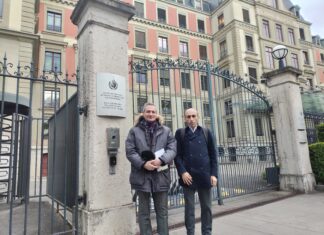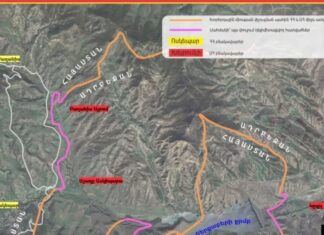By Ani Avetisyan
The European Union and United States are incentivizing Armenia to maintain its westward geopolitical shift. The growing EU-US role in supporting the country’s reform efforts is drawing a predictably hostile reaction from Russia and Azerbaijan.
A meeting April 5 in Brussels involving Armenian Prime Minister Nikol Pashinyan, European Commission President Ursula von Der Leyen, EU Vice President Josep Borrell and US Secretary of State Antony Blinken yielded a significant assistance windfall for Armenia. The EU pledged 270 million euros (about $291 million) over four years and the US added another $65 million in aid designed to help Armenia recover from its decisive defeat in the Second Karabakh War and reduce its economic dependence on Russia.
In a joint statement, the participants affirmed a commitment to expanding cooperation across multiple political and economic spheres, including “governance, law enforcement, trade, connectivity, agriculture, energy, and technology.”
“The European Union and the United States acknowledged the substantial progress Armenia has made since 2018 on democratic and justice reforms and the fight against corruption, and expressed a commitment to continue partnering with and supporting Armenia as it further strengthens its democracy and the rule of law, in line with our shared values and principles”, the statement read.
Describing EU-Armenian relations as “increasingly aligned,” von der Leyen also praised Armenia’s efforts to combat sanctions-busting trade that helps the Kremlin prosecute its war against Ukraine. Pashinyan and other Armenian leaders in recent months have expressed interest in exploring EU accession.










